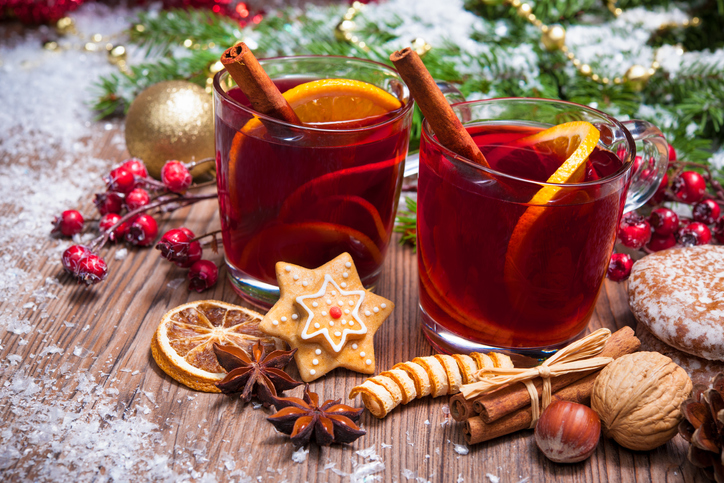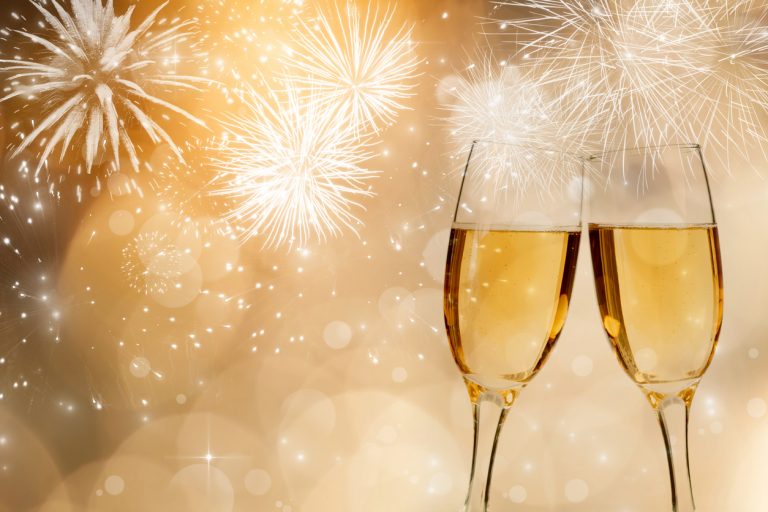Holiday Etiquette: A Proper New Year’s Eve Toast
Guest Post by: Sharon Schweitzer
I asked my friend and colleague Sharon Schweitzer, founder of Protocol & Etiquette Worldwide to fill us in on some Toasting Etiquette Tips …
A Proper New Year’s Eve Toast
Are you looking to add international flair to your New Year’s Eve conversation? After traveling the globe, visiting vineyards and learning to interact with different cultures, I have gained a few insights about how to properly celebrate. One of the oldest of all modern holidays is New Year’s Eve. It was first observed by the ancient Babylonians 4000 years ago. Our current tradition of ushering in the New Year in the U.S. often includes a New Year’s Eve toast with Champagne or another beverage at midnight!
1. Toasting History: The Ancient Greeks started the art of toasting to one’s health when the host took the first, good faith sip of the communal wine. This first sip assured the guests that the beverage was not poisoned. The word ‘toast’ originated from the Roman practice of placing a piece of spiced, charred bread in the wine to mellow the flavor. When drinking to someone’s health, the cup was drained to get to the piece of saturated toast at the bottom.
2. Non-alcoholic toasts: Today, toasting is about the sentiment of the occasion, and part of the finale of New Year’s Eve in the U.S. It is also a highlight at weddings, birthdays, anniversaries and retirements. It is perfectly acceptable to toast with a sparkling beverage, ginger ale, club soda, seltzer, water or juice. Keep in mind it is about the celebration and not the liquid.
3. New Beginnings & Christenings: Champagne was traditionally served at the Coronation of French kings. Champagne has historically been associated with christenings, new beginnings, and rare moments. It has become associated with New Year’s Eve festivities around the world for this reason.
4. What is Champagne? Champagne is a sparkling wine that comes from the region of Champagne, in France. In the 1600s, it is thought that the monk Dom Perignon “invented” Champagne. It is known that he discovered that the best Champagnes were made from blends of the Champagne grapes (Pinot Noir, Pinot Meunier and Chardonnay) from different Champagne vineyards. An interesting tip, the smaller and faster the bubbles, the finer the champagne. Scientists have determined that there are 95 million bubbles in a bottle of champagne!
5. Champagne Bottle Opening: The proper way to open a bottle of champagne (avoiding spray, injury or spills) is to hold the bottle at a 45 degree angle, grasp the champagne cork gently with the one hand and turn the bottom of the bottle firmly with the other hand. Be sure to twist the bottom of the bottle slowly, until you feel the cork gently release in your hand.
6. Sabering Champagne: A commonly asked question about a fascinating way to open a bottle of champagne involves the lost art of sabering. Legend has it that Napoléon’s mounted artillery officers started the trend of sabering. While riding a horse, these soldiers used a blade to cut the top off a champagne bottle with the cork still attached to it. Today, for an experienced wine connoisseur to accomplish this feat, precise preparation must occur. First, the bottle should rest upside down 60 minutes in ice, and must be very, very cold. Then, the bottle is removed from ice, slowly turned upright, held at a 45 degree angle with no fluid touching the cork, gently touch the blade on the shoulder of the bottle, then use a short follow-through movement with the blade using the elbow; not the wrist. Please think twice before attempting to saber your champagne, as this is mostly a lost art and could result in shattered glass in the champagne!
7. Around the World: Nearly every culture has practiced toasting in one form or another. One of the most common toasts made on New Year’s Eve is simply “Happy New Year.” Communicate “Happy New Year,” “Cheers to the New Year” or “Congratulations for the New Year” in the following languages:
Language / Spelling
Chinese: Chu Shen Tan (pronunciation)
Czech: Stastny Novy Rok
Danish: Godt Nytar
French: Bonne annee
Gaelic (Scotland): Bliadhna mhath ur
German: Frohes Neues Jahr / Gutes Neues Jahr
Greek: kali chronya
Hawaiian: Hauoli Makahiki hou
Hebrew: Shana Tova (pronunciation)
Hungarian: Boldog Uj Evet
Irish: Athbhliain faoi mhaise dhuit /Bhliain nua sasta
Italian: Felice Anno Nuovo/Buon anno
Japanese: akemashite omedetou gozaimasu (pronunciation)
Latin: Felix sit annus novus
Portuguese: Feliz Ano Novo
Russian: s novim godom (pronunciation)
Spanish: Feliz Ano Nuevo
Swedish: Gott Nyttar
Thai: saa-wat-dii pi-mai (pronunciation)
Turkish: Yeliniz Kutlu Olsun/ Mutlu yillar
Welsh: Blwyddyn newydd dda
How many countries and continents have you visited? In what language can you say “Happy New Year”?
Sharon is an International Protocol and Corporate Etiquette Consultant. To learn more about Sharon, visit her website.
Cheers to a Dazzling 2012,



